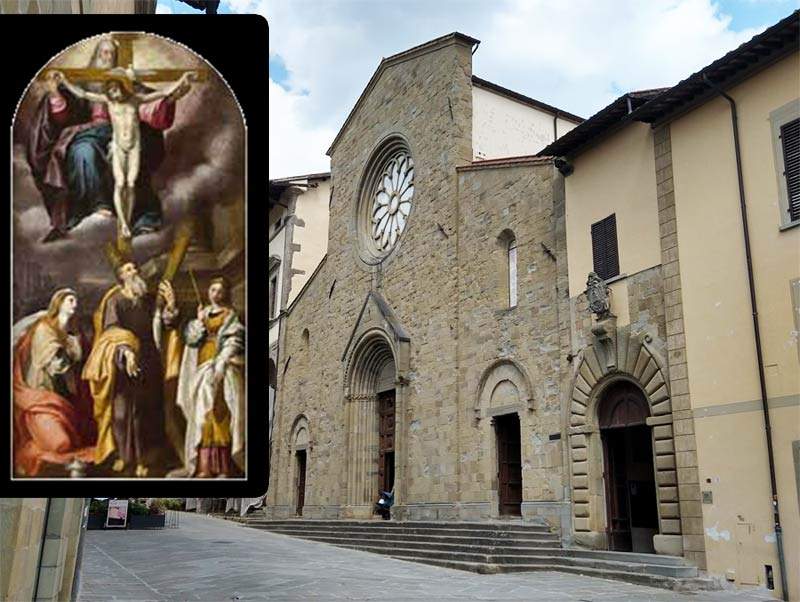A splendid altarpiece by Durante Alberti (Sansepolcro, 1538 - Rome, 1613), made in 1582 for the chapel of the Aretini (or Artini) family, will be returned to the Cathedral of Sansepolcro (Arezzo): it is the Trinity and Saints Andrew, Mary Magdalene and Christina (oil on canvas, 373 x 192.5 cm), which will be donated to the cathedral by Eleonora and Bruno Botticelli and Fabrizio Moretti on the occasion of the 32nd edition of the Florence International Biennial. The church will thus be compensated for a serious loss suffered in the past. The donation will commemorate the memory of the donors’ parents, namely Veria and Franco Botticelli and Alfredo Moretti.
The work best represents the pictorial qualities of Durante Alberti, a native of Sansepolcro who belonged to a dynasty of artists. His father was the carver Romano, known as Nero, author of wooden statues and ornaments. In the church the work will be reunited, after more than a century and a half, with another fine painting executed by Durante Alberti for Borgo Cathedral and still in the church, the altarpiece depicting theAdoration of the Shepherds made for the Pichi Chapel.

“This donation, in addition to linking the memory of our parents to the restitution of an important work for the cathedral of Sansepolcro,” say Fabrizio Moretti and Bruno Botticelli, “is meant to be a significant gesture of our families’ affection for the cultural heritage of our country, of détente and positivity for those difficult moments and misunderstandings between the public and the private sector. It is also a gesture that seals our friendship that began in the mid-1990s between the walls of the booths of the Assisi Antiques Exhibition and has come down to the present day. We have chosen this particular moment in which we hold two important positions in our field, respectively as Secretary General of BIAF and as President of Antiquari d’Italia.”
Durante Alberti, long active in Rome and Latium, where he joined the ranks of the Counter-Reformation painters commissioned to adorn the altars of the Counter-Reformation churches, executed works with a severe spiritual approach, due in particular to his frequentation of the Capuchin order, for which he worked on several occasions. In the Trinity and Saints Andrew, Mary Magdalene and Christina, in which the figures in the foreground stand out against the background of classical architecture, there are also influences from Venetian painters, filtered through Baroque atmospheres. The altarpiece, as mentioned above, was made for the chapel of the Aretini, or Artini, family, dedicated to Saints Andrew, Mary Magdalene and Christina, which was leaning against the left wall of Sansepolcro Cathedral. The work, recorded in the pastoral visit made to the church by Bishop Niccolò Tornabuoni in 1582, was given by Sansepolcro Cathedral in 1859, during a rearrangement of the church that involved the removal of as many as thirteen altars. It then became part of the collection of the Lilloni Alberti family, descendants of the middle-class artist dynasty. Because of its large size, at the time the canvas was divided into two fragments, one with the Trinity and the other with Saints Andrew, Mary Magdalene and Christina. The two fragments were purchased at an auction in 2002 and properly restored and reunited with each other by the current owners.
Pictured: the Durante Alberti altarpiece and the Sansepolcro Cathedral.
 |
| Sansepolcro, important 16th-century altarpiece will be returned to cathedral |
Warning: the translation into English of the original Italian article was created using automatic tools. We undertake to review all articles, but we do not guarantee the total absence of inaccuracies in the translation due to the program. You can find the original by clicking on the ITA button. If you find any mistake,please contact us.